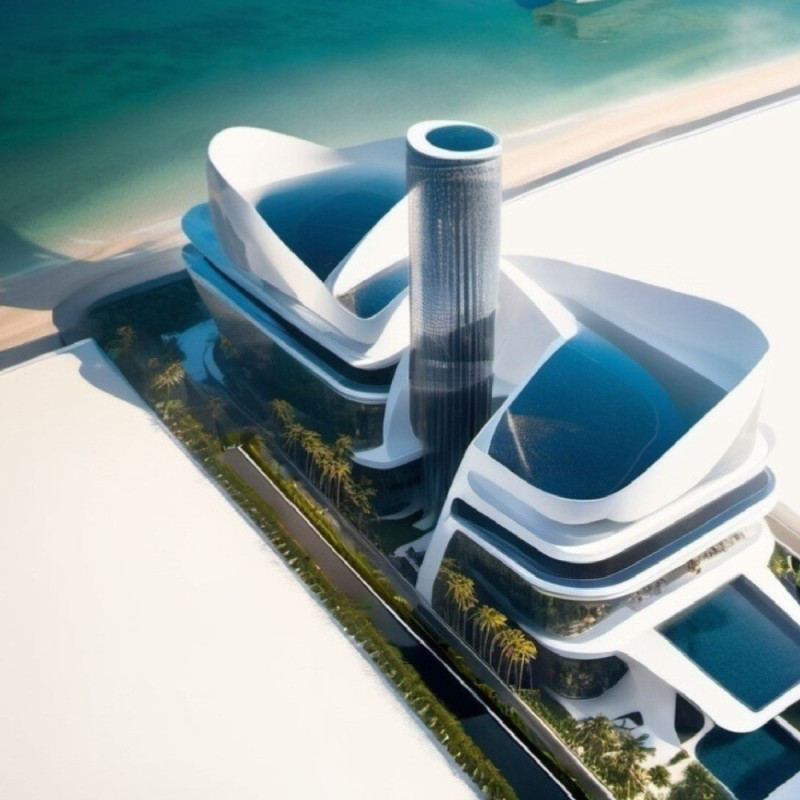5 key facts about this project
At its core, the project embodies the principles of sustainable architecture, showcasing a meticulous selection of materials that reflect both durability and environmental responsibility. The primary materials used in the construction include high-quality concrete, glass, and wood. These materials not only establish a modern and cohesive aesthetic but also serve practical purposes, such as energy efficiency and structural integrity. The incorporation of natural elements, such as wooden accents, introduces warmth into the design, inviting users to engage more intimately with the space.
The architectural design is characterized by a fluid layout that encourages movement and interaction. Open floor plans create a sense of accessibility, allowing natural light to permeate interior spaces effectively. Strategically placed windows and glass doors ensure that the building remains connected to the outdoors, offering views that enhance the occupant experience. This dialogue between indoor and outdoor environments is crucial, as it enhances the overall ambiance and provides users with an ever-changing landscape that reflects the seasons and local climate.
One of the key features of the architectural design is its integration with the surrounding landscape. The project is thoughtfully situated to leverage existing site conditions, which not only promotes harmony with nature but also minimizes environmental impact. Landscape architecture plays a significant role here, with strategically planted greenery and communal areas designed for leisure and socialization. This emphasis on outdoor spaces reinforces the importance of community engagement and encourages users to appreciate the natural beauty of the environment.
Another noteworthy aspect of the project is its focus on modularity and adaptability. The design allows for reconfiguration depending on the evolving needs of the community or occupants, showcasing a forward-thinking approach that acknowledges changing dynamics in how spaces are utilized. This flexibility is achieved through modular partitions and versatile furniture that can be rearranged easily, accommodating both large gatherings and intimate meetings.
Unique design approaches are evident throughout the facade, which blends traditional and modern elements to create a cohesive yet unique identity. The treatment of the building envelope utilizes textural variations and shadow play to evoke a sense of depth and interest. This careful manipulation of surfaces not only enhances aesthetic appeal but also contributes to passive heating and cooling strategies, reducing the need for artificial climate control.
The overall design of the project stands as a testament to the ability of architecture to shape social interactions and promote community well-being. By focusing on inclusivity and accessibility, the project aims to create a welcoming environment for a diverse population. Attention to detail is evident in aspects such as seating arrangements, pathways, and signage, all designed to facilitate movement and interaction among users.
For those looking to immerse themselves in the intricacies of this architectural endeavor, I encourage a closer examination of the architectural plans, sections, and designs. These elements provide invaluable insights into the thought processes driving the design outcomes and illustrate how the project successfully marries functionality with aesthetic values. Exploring the architectural ideas foundational to this project will deepen your understanding of the contemporary approaches shaping our built environment.


 Cris Angelo Soriano,
Cris Angelo Soriano, 























